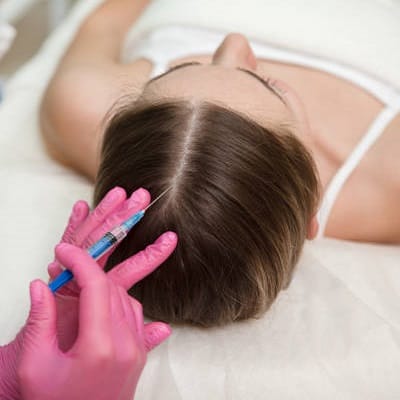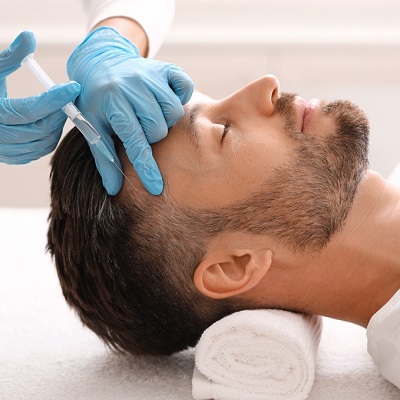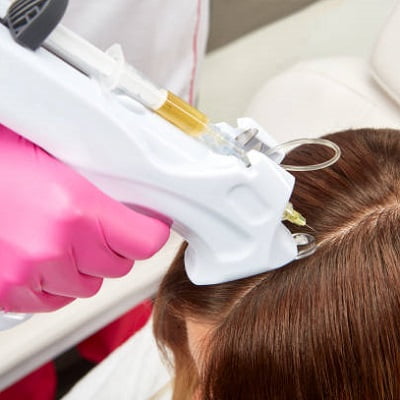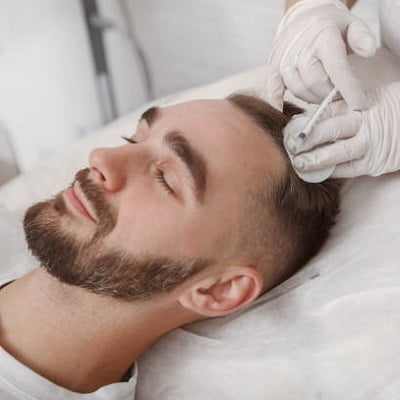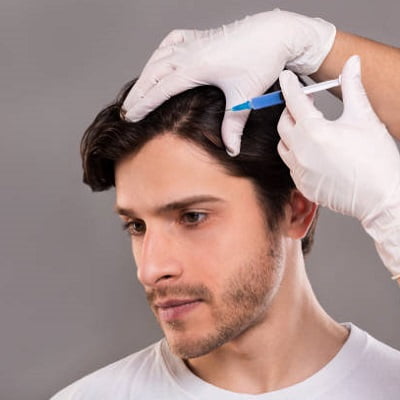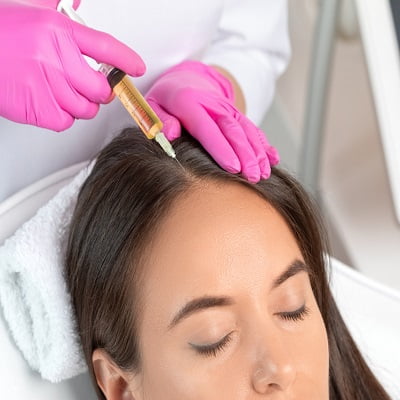PRP Hair Treatment is becoming popular with the people who want to control hair loss without surgery. Moreover, they know the side effects of other surgical methods and their healing processes. Therefore, platelet-rich plasma (PRP) treatment has grown relatively popular between them. Furthermore, using the body’s inherent healing mechanisms strengthens hair follicles and promotes hair growth. However, there are different forms of this treatment. Hence, we will discuss What Are The 4 Types of PRP Hair Treatment in this blog.
What Are The 4 Types of PRP Hair Treatment?
The 4 Types of PRP Hair Treatment are available in Islamabad, Pakistan.
-
Pure PRP Treatment
In this type of therapy, experts withdraw the patient’s blood, purify it, and subsequently inject that into the skull where hair is thinning or falling out l. Moreover, it contains many growth elements that stimulate hair follicles and enable natural hair development.
By boosting hair development and lowering hair loss, it is well-known to be helpful for those with early-stage hair loss. It is ideal for those losing a little to a lot of hair and wishing for a natural approach to grow it once more without adding anything else.
-
Leukocyte Platelet-Rich Plasma (L-PRP)
This kind of PRP includes white blood cells (leukocytes) and platelets. The leukocytes help regulate inflammation and repair lost tissue; the platelets are what release growth factors. This is the same as the pure PRP technique. However, it differs only in the centrifuge’s settings. Hence, it works to retain some white blood cells.
Further, it can be used on particular areas of the scalp with injections. Adding leukocytes enhances healing in tissues and could hasten the process following therapy. Some research suggests LR-PRP might produce better hair growth than pure PRP. Those losing a lot of hair or having had poor success with previous PRM treatments would find it most suited.
-
Traditional Platelet-Rich Plasma (PRP)
You have a combo treatment if you have microneedling at the same time, along with PRP injections. Microneedling creates microscopic holes in the skull by use of a machine using very fine needles. This signals the beginning of the body’s natural healing process.
The surgeon makes little holes in the skull during a microneedling session. Afterward, they inject PRP into it. Hence, it penetrates very well into the little cuts and enhances absorption. The skull may more readily absorb the PRP due to the small holes by microneedling. So, this combo promotes collagen synthesis and supports the healthy growth of hair follicles. In addition, it is perfect for those seeking maximum benefits from their therapy and want to accelerate more profound hair cell restoration.
-
Pure Platelet-Rich Fibrin (P-PRF)
Pure Platelet-Rich Fibrin (P-PRF) is a high-tech biomaterial made from a patient’s blood, aiding the body’s self-healing and new tissue growth. It differs from the plasma by creating a fibrin matrix with platelets, growth factors, and white blood cells. This combination releases healing elements gradually, enhancing the body’s capacity for healing and new cell growth over time.
It is widely used in dental operations, cosmetic procedures, and physical therapies. Moreover, It offers faster healing due to the fibrin structure’s support for cell movement and growth. It is natural and biocompatible, and slow growth factor release allows tissues to repair and regenerate over time. It promotes self-awareness and wound healing, reduces inflammation, and enhances regenerative treatment outcomes.
Choosing the Best PRP Treatment:
The ideal PRP therapy depends on several factors, including budget, hair loss degree, and desired outcome. However, discuss your scalp condition, medical background, and personal preferences with an expert physician. They will then create a customized treatment plan based on your desires and current condition to get the best results.
Final Thoughts:
All things considered, PRP hair treatments are adaptable and successful means of addressing hair loss. Knowing the types of this treatment and their applications will help you to make a wise decision. Every treatment, straight PRP, PRP with leukocytes, microneedling, or combination has advantages. However, it differently affects each individual.
Book your appointment at SKN Cosmetics Islamabad for the best course of action and expert advice. Hence, get your hair back with this robust therapy without risk or side effects.

